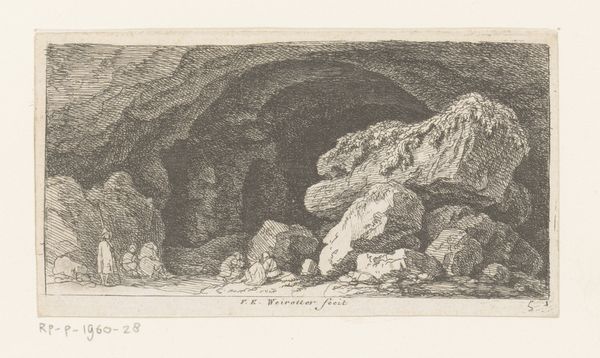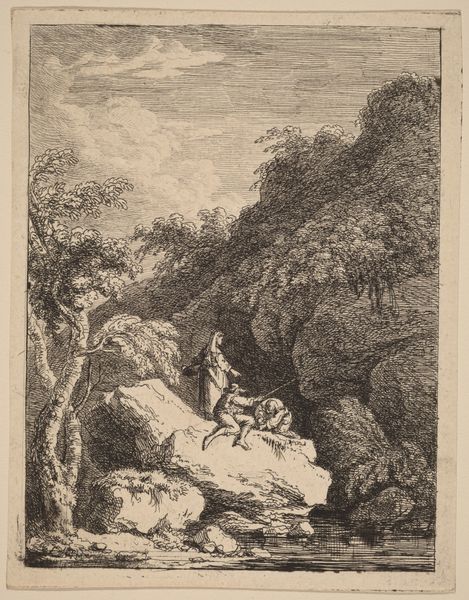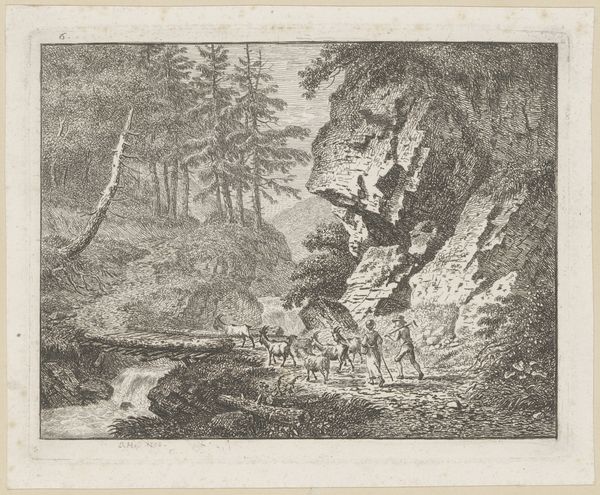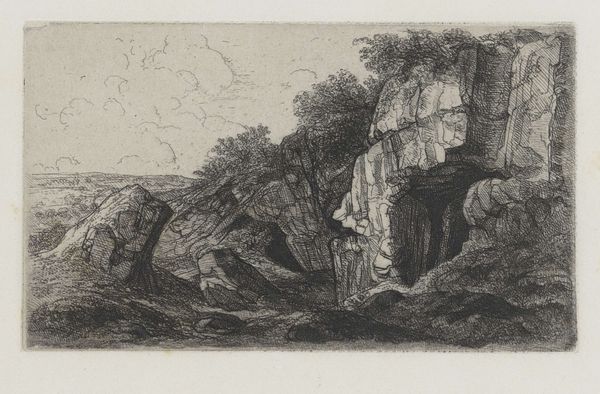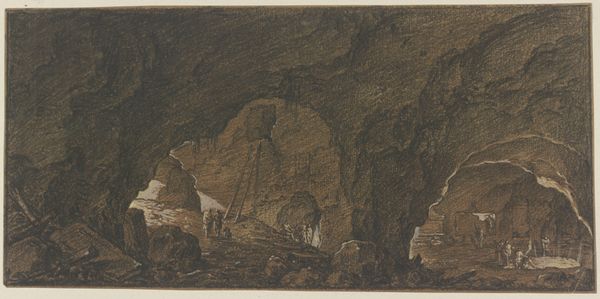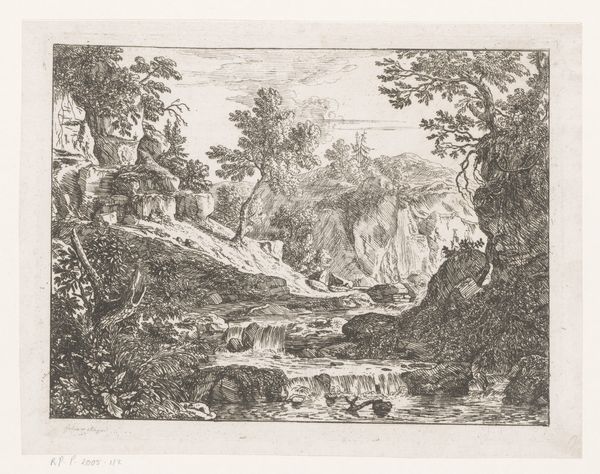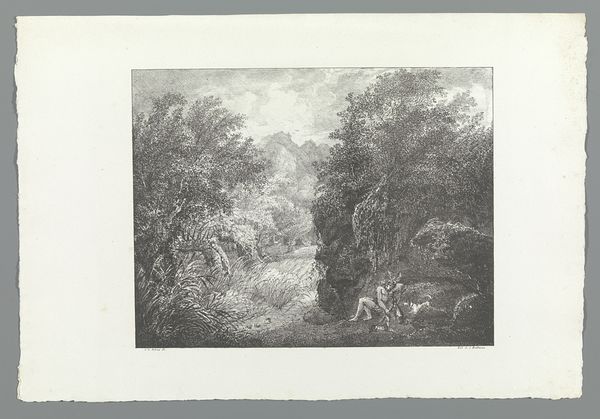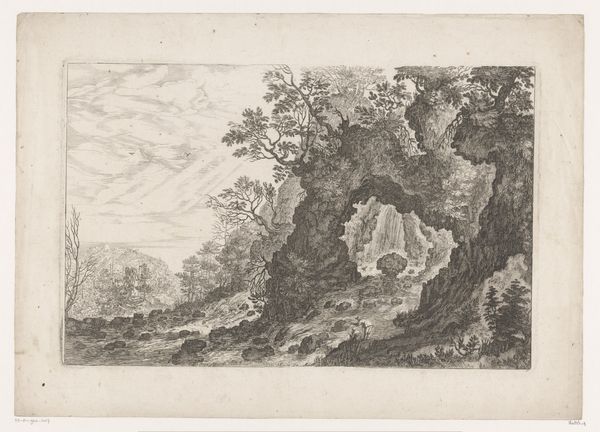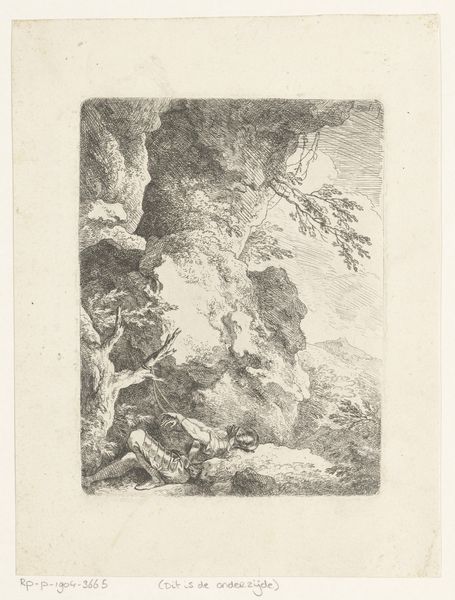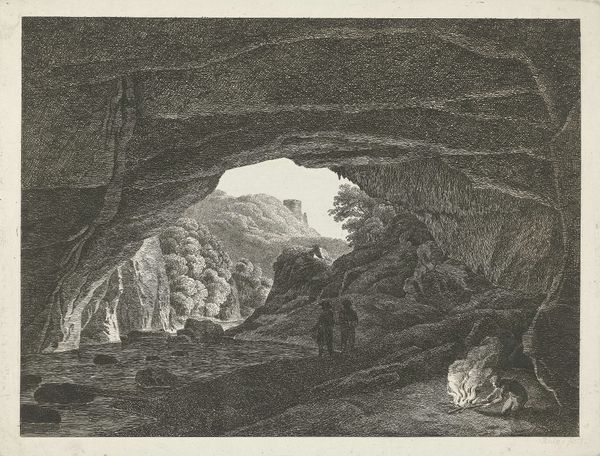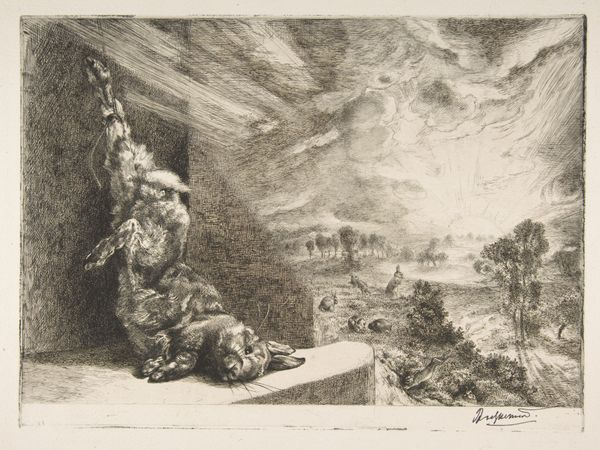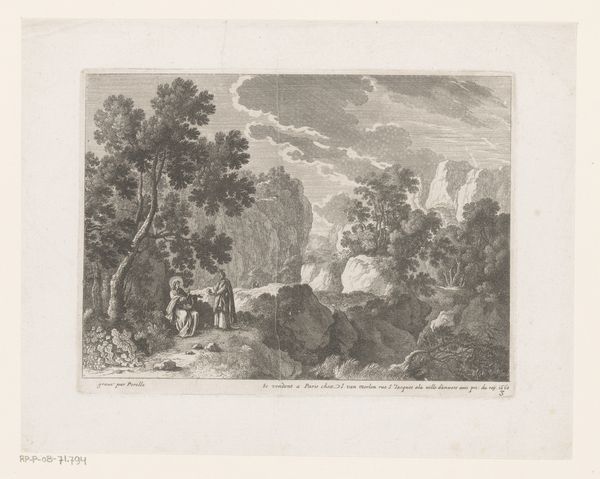
Man, vrouw en kind voor een opening in een rotswand 1766 - 1767
0:00
0:00
Dimensions: height 100 mm, width 153 mm
Copyright: Rijks Museum: Open Domain
Curator: Before us we have Franz Edmund Weirotter's etching from 1766-1767, titled "Man, Woman, and Child before an Opening in a Rock Wall." Editor: The somber mood here is instantly striking. It is achieved, I think, through stark contrasts, where dark, brooding masses give way to delicate lines suggestive of form and light. Curator: It’s an interesting choice of material, etching, allowing for mass production, thereby democratizing landscape art, typically reserved for the elite. Etchings, being relatively inexpensive, made images and places accessible to a much broader segment of society. Editor: I agree. There's a structured division—earth and sky, light and shadow—articulating the drama. The human element adds a vertical counterpoint, while that light on the horizon line functions almost as a classical vanishing point. Curator: Indeed. Also to consider, is the actual division of labour in Weirotter's workshop. His workshop would've produced and distributed such images, relying on a team to create, print, and disseminate these scenes across Europe. Who was actually the ‘author’ becomes blurry here, a true material question to contend with. Editor: This reminds me that Weirotter skillfully uses lines and dots to model form, crafting depth where the tonal range isn't particularly varied. The entire composition funnels the eye through its interplay of form, emphasizing the rock opening. Curator: That is the Baroque legacy. Furthermore, Baroque art's patronage depended greatly on aristocratic sponsorship, which defined not only the aesthetic values of the period, but also dictated artistic production’s distribution, shaping audience perception of the image's value as tied to nobility. Editor: It is clear now. In contemplating Weirotter's technical skill in creating the vista with limited materials and tools, a formal reading reveals how he constructs space through shadow and perspective—to lead the eye to what exactly? To think deeper about the human’s place within this majestic setting. Curator: Considering Weirotter's workshop in totality brings fresh perspective as he brought such images to the market. Editor: Yes, the journey has deepened our appreciation, especially by exploring how visual artistry translates in our current era.
Comments
No comments
Be the first to comment and join the conversation on the ultimate creative platform.

